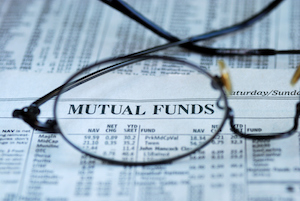 Continuing their two-decade decline, the average expense ratio paid by fund investors fell again last year, Morningstar’s annual U.S. Fund Fee Study reports.
Continuing their two-decade decline, the average expense ratio paid by fund investors fell again last year, Morningstar’s annual U.S. Fund Fee Study reports.
The study, which evaluates trends in the cost of U.S. open-end mutual funds and exchange-traded funds (ETFs), found that the asset-weighted average expense ratio of U.S. funds fell from 0.42% in 2020 to 0.40% in 2021, saving investors an estimated $6.9 billion as a result.
These savings have accrued disproportionately to investors in passive funds. The asset-weighted fund fee across all passive funds has declined 66% since 1990, dropping to 0.12% in 2021, the study notes. Meanwhile, the asset-weighted average expense ratio for active funds fell from 0.63% in 2020 to 0.60% in 2021, driven mainly by large net outflows from expensive funds and share classes and, to a lesser extent, inflows to cheaper ones.
Meanwhile, in attempting to marry the best attributes of active and passive approaches to portfolio construction, strategic-beta funds are serving as an alternative to higher-cost actively managed funds, Morningstar notes. In 2021, the asset-weighted average fee for strategic-beta funds was 0.17%, which was slightly higher than the figure for traditional index funds (0.12%) but significantly lower than for active funds (0.60%).
The study further observes that the lion’s share of flows into low-cost funds has gone to index mutual funds and ETFs, which has been driven by a variety of factors, including shifting investor preferences, the evolving economics of the advice industry and the ascendance of target-date funds as the default investment option in retirement plans.
“Intensifying competition among asset managers and changes in the economics of advice are two factors driving fees lower,” notes Bryan Armour, Director of Passive Strategies Research for North America. “Investors are also increasingly aware of the importance of minimizing investment costs, which we expect to continue in this down market.”
In fact, the evolution of the advice business is shaping flows and, by extension, fees, the study notes. Fund companies are charging investors less than they were five years ago, partly because they are dropping certain line items from investors’ bills. “As advice (such as loads) and marketing and distribution costs (such as 12b-1 fees) get scrapped to reflect the evolution of advisory practices, fund fees are getting stripped down to manufacturing costs (that is, management fees).” This effect has been most pronounced among active funds, where these expenses have been most prevalent, the report adds.
Low-Cost Inflows
And with investors favoring low-cost funds, the study found that in 2021, the cheapest 20% of funds saw net inflows of $1.05 trillion, with the remaining 80% amassing $57 billion in inflows—the first year of collective inflows for pricier funds since 2013. The cheapest 5% of funds alone received $648 billion of inflows.
Moreover, in 9 of the last 10 years, the cheapest 20% of funds across all Morningstar Categories have, as a group, accounted for 100% of the net inflows into all funds, while money has poured out of the remaining 80% in 8 of the past 10 years. Overall, more than $5.8 trillion has flowed into the low-cost cohort during this 10-year span, while $1.7 trillion has been pulled from the remaining funds.
Additionally, investors in sustainable funds are paying a “greenium” relative to investors in conventional funds. This is evidenced by these funds’ higher asset-weighted average expense ratio, which stood at 0.55% at the end of 2021 versus 0.39% for their traditional peers. That said, this “greenium” has been shrinking steadily in recent years and reached its lowest level on record in 2021, Morningstar observes.

